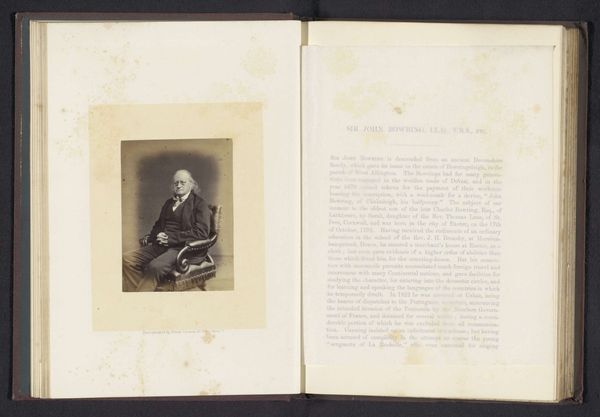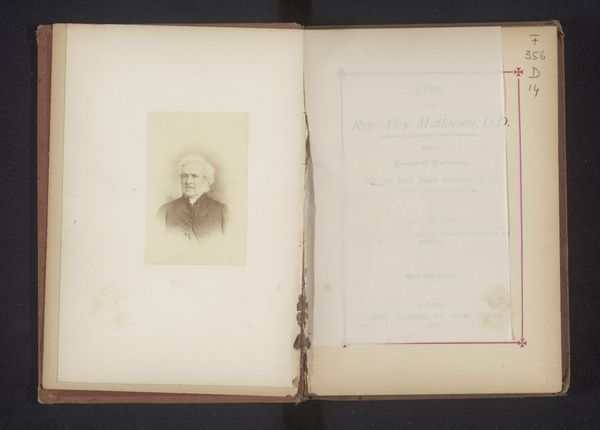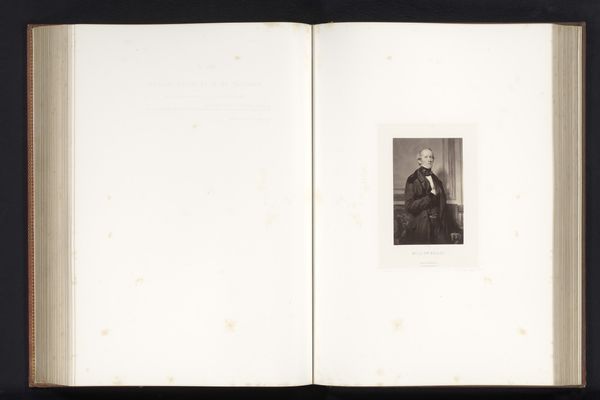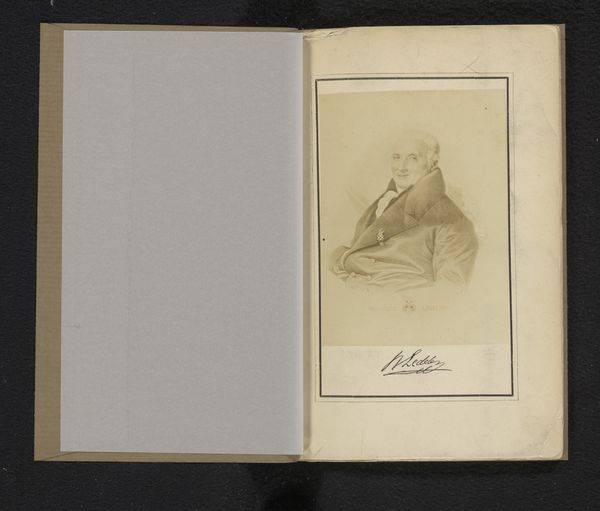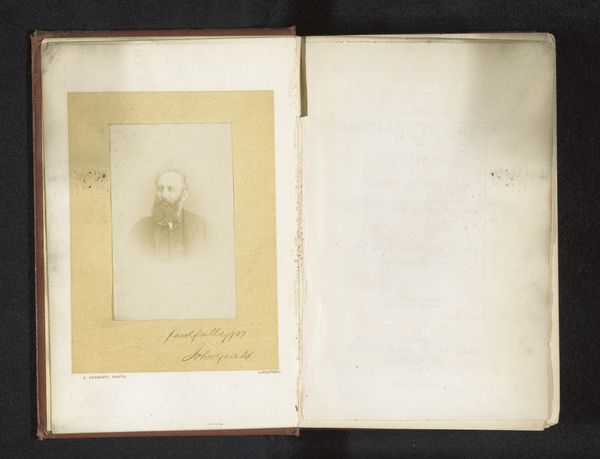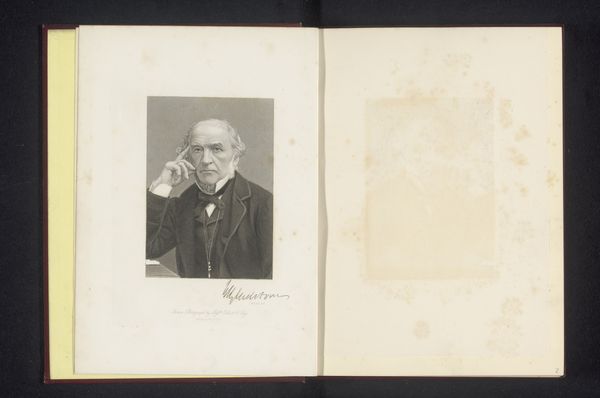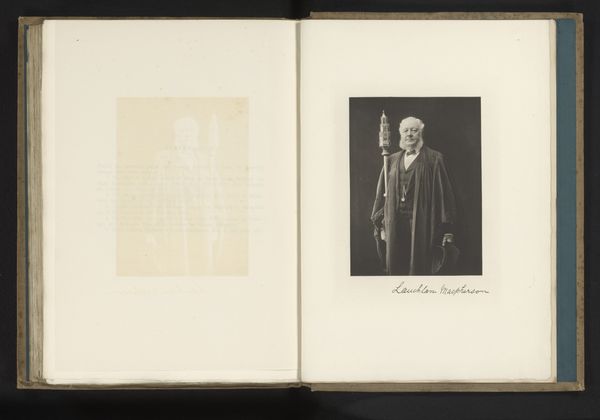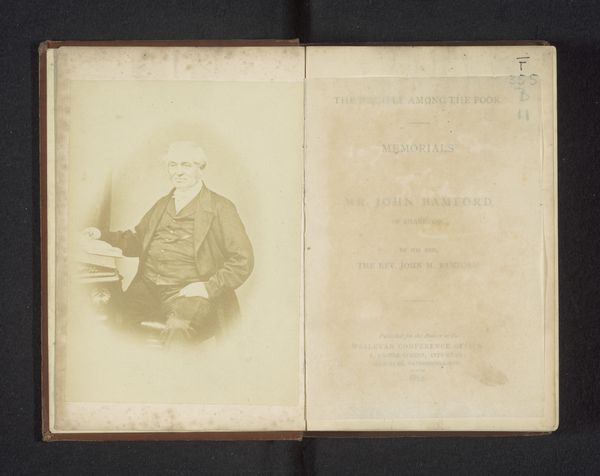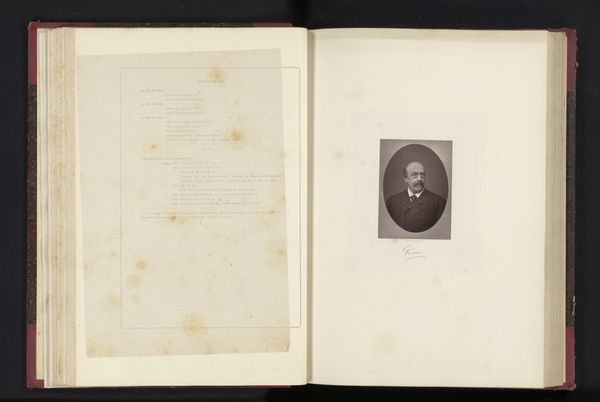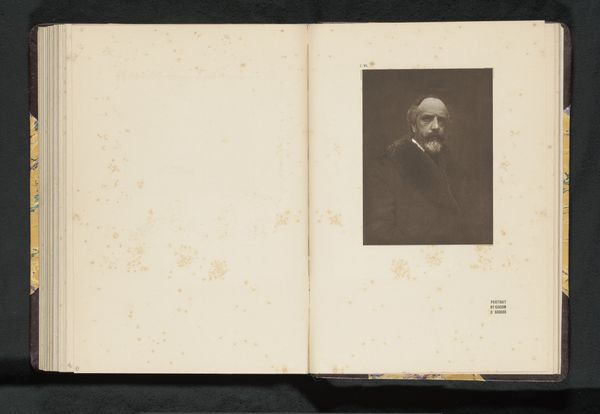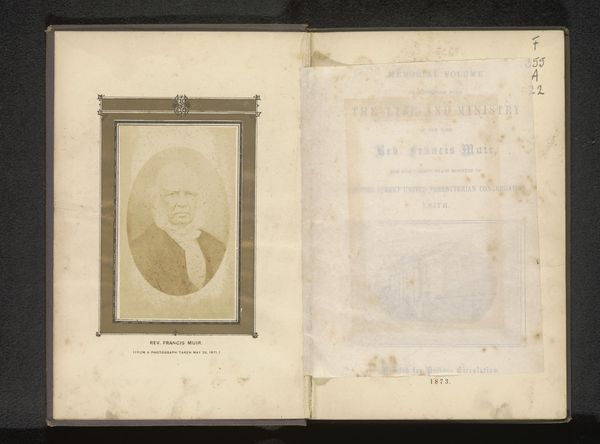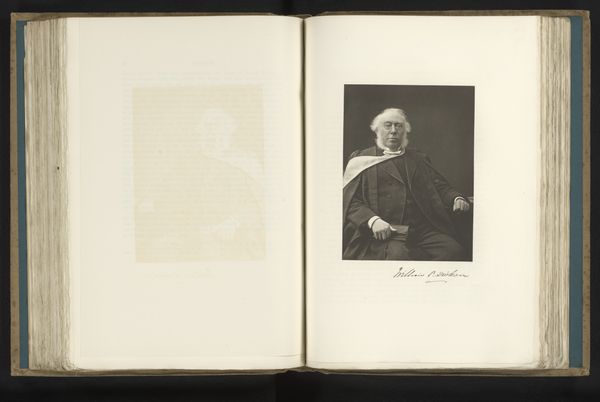
print, photography
#
portrait
# print
#
photography
#
academic-art
Dimensions: height 91 mm, width 55 mm
Copyright: Rijks Museum: Open Domain
Editor: So here we have "Portret van Wilhelm Wackernagel, lezend," predating 1873. It's presented as a book, actually, with a photographic print opposite a printed page of text. It's incredibly muted in tone. What do you see here? Curator: Well, I'm immediately struck by the interplay between the photographic and the printed. Photography, relatively new at this time, was challenging established modes of portraiture, yet here it's bound within a traditional book. It really blurs the line between mass production and something almost craft-based in its construction, doesn’t it? Editor: It does. So, do you think that tension was intentional? Curator: Absolutely! The means of production informs the content itself. Think about the labor involved—the photographer, the printer, the binder. And what were their social roles? What class did they belong to? That book itself, what was its purpose in society? This wasn't about 'art for art's sake'; it's about constructing a very particular kind of image within a developing industrial context. Editor: So, it’s not necessarily about the likeness of Wackernagel so much as the way this particular image was created and disseminated? Curator: Precisely! Look closely at the fading, the spots on the page, the imperfections inherent in early photographic printing. This materiality isn't accidental. It highlights the process, the very physical reality of image-making. Editor: That’s really fascinating; I never thought about it that way. Seeing the materials and the making of art as a focal point…it really does shift the perspective. Thanks! Curator: Indeed! Considering these aspects deepens our appreciation, hopefully. It moves the conversation beyond simple representation to engage with labor and materiality.
Comments
No comments
Be the first to comment and join the conversation on the ultimate creative platform.
